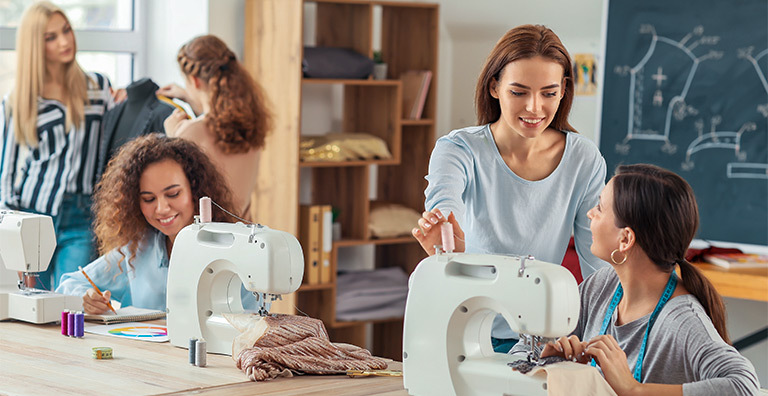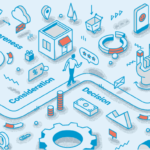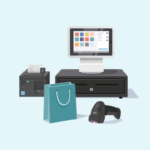The numbers don’t lie. Millennials – people born between 1981 and 1996 – make up the largest portion of retail consumers. There are more than 80 million millennials, which makes the generational group larger than the population-record-setting baby boomers. But it’s not just size that makes millennials a generational force to be reckoned with. Their shopping behaviors and interests are changing retail – and nowhere is the impact more noticeable than in the fabric, quilt, sewing, and crafting segments.
A profile of the millennial shopper
As a generation, millennials are ethnically diverse, well educated, and technologically savvy. While they’re less well-off than prior generations and therefore more price-conscious, their values can outweigh price sensitivity when there’s a choice to be made. Three in four say it’s important for a company to give back to society, and almost half say they are more willing to buy from brands when the purchase supports a cause they believe in.
Millennials care about a range of issues, with the environment, sustainability, and wellness – both physical and financial – topping the list. They’re independent thinkers – and shoppers – and they appreciate creativity in both products and life. Seventy-three percent of millennials consider themselves creative. The top five list for what creativity means to millennials includes, in order, innovation, ideas, being different, arts and crafts, and production.
A craving for connection is another defining trait of millennials. Sure, they’re masters of self-service convenience, but when it comes down to it, they prefer personalized retail experiences over transactions, and they’ll go out of their way to purchase from stores that invest in creating a two-way relationship.
Sew what? How to capitalize on millennial buying power
For sewing, fabric, quilt, and craft retailers, millennials present a sizable and unique growth opportunity. And the COVID-19 pandemic has only amplified the opportunity to attract and engage millennial customers – as well as their younger Gen Z counterparts. What will it take to win over this powerful consumer segment? Success lies in an approach tailored to appeal to their creative, purpose-driven, price-conscious personas.
1. Put experience first.
Millennials have been shopping online from the onset. But that doesn’t mean they automatically choose it above in-person retail. Eighty-two percent of millennials prefer brick-and-mortar retail over the internet, but the in-store experience must outweigh the convenience factor.
Sewing, quilting, and craft retailers should lean into the creative elements that come naturally and mix in omnichannel elements to reach and engage millennials. For example, increase your store’s Instagram presence to showcase finished projects and who’s making what. The heavy visual focus of Instagram is a natural fit for sewing retailers and a natural habitat for creative millennials. Seventy percent of millennials browse Instagram daily.
Once you’ve got them engaged, give them plenty of reasons to visit your store. One of the best ways is to offer opportunities to connect with others who share their interests and creativity. Host events and offer classes that encourage potential customers to take the next step by participating in beginning quilting, pattern making, or cross-stitch. Your point-of-sale (POS) system can make managing classes and events easy. Explore whether your POS offers capabilities that enable you to create classes, track attendance, collect fees, and, of course, package and sell related materials.
Related: Customer Experience Counts: How to Make Your Store A Destination
2. Appeal to their better natures.
Environmental and sustainability concerns drive millennials’ purchase decisions, with 75 percent adjusting their buying habits to align with their beliefs. Sewing retailers can easily tap into the issues by highlighting the sustainability of making or upcycling garments.
After growing up in the era of “fast fashion,” where clothing was meant to last only a season or two, millennials are driving “slow fashion,” which focuses more on the process and resources, and celebrates timeless over trendy. Making their own clothes is an extension of the slow fashion movement, with more millennials taking up sewing and knitting. The pandemic accelerated the trend, with sewing machine manufacturers unable to keep up with the demand. The uptick in interest has resulted in a predicted $11.2 billion increase in the global market for sewing machines over the next seven years.
Capitalize on the interest by showcasing sustainability. Feature patterns designed for the millennial market, stock natural-fiber fabrics, and offer tips and classes to help customers take their skills to the next level.
3. Make it easy to engage.
When designing a shopping experience tailored for millennials, focus on ease every step of the way. And get creative when customizing your offering. For example, as millennials seek to repurpose and personalize T-shirts or garments, make equipment like sergers or electric cutting machines available for them to use in your store. Or showcase knitting patterns that can help hobby knitters make a cable knit sweater – and host knit-in events (in-person or virtual) for people to get together, share what they’re working on, and get tips.
Technology is another way to deliver ease. Seventy-six percent of millennials browse online before making a purchase. Make sure you’re producing content for your website and social media that appeals to millennials and makes it easy for them to engage by subscribing to a newsletter, signing up for an event, or enrolling in a class.
Related: 5 POS Promotions that Boost Retail Sales

Millennials are an ideal generational match for sewing, quilting, and craft retailers looking to expand their customer base and drive growth. All it takes is an understanding of what matters most to millennials and a focused strategy for connecting with these savvy and interested consumers.
POSIM – a point-of-sale and inventory management system – can help. Start by taking our “How Well Does Your POS system measure up?” quiz – especially for fabric, quilt, and sewing retailers. Then, contact us for a demo to learn how POSIM can help drive your growth strategies.











